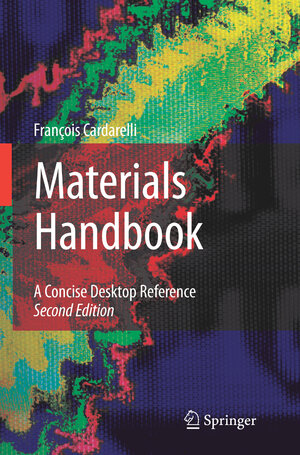
From the reviews of the second edition:
„This handbook contains practical and concise information on key scientific and technical material properties for the most commonly used industrial materials … . Compared with many other handbooks on material properties, this handbook presents more background information on how to use the data presented. … Those looking for a materials reference handbook on commonly used industrial materials, especially those who need to have a better understanding of material property fundamentals, will find this an interesting and very useful handbook.“ (IEEE Electrical Insulation Magazine, 2009)
“This desktop reference on materials will be useful for engineers, physicists, chemists, and materials scientists who are looking for typical numbers on the physical properties of materials. … the index is very complete, it will be easy to find the property of interest. … The book also contains nine useful appendices. … The size of the volume and its 1300 pages make this handbook a real ‘desk’ reference. … whoever does pay will have bought a nicely bound and durable handbook.” (Fernande Grandjean and Gary J. Long, Belgian Physical Society Magazine, Issue 1, 2010)Despite the wide availability of several comprehensive series in materials sciences and metallurgy, it is difficult to find grouped properties either on metals and alloys, traditional and advanced ceramics, refractories, polymers and elastomers, composites, m- erals and rocks, soils, woods, cement, and building materials in a single-volume source book. Actually, the purpose of this practical and concise reference book is to provide key scientific and technical materials properties and data to materials scientists, metallurgists, engineers, chemists, and physicists as well as to professors, technicians, and students wo- ing in a broad range of scientific and technical fields. The classes of materials described in this handbook are as follows: (i) metals and their alloys; (ii) semiconductors; (iii) superconductors; (iv) magnetic materials; (v) dielectrics and insulators; (vi) miscellaneous electrical materials (e. g., resistors, ther- couples, and industrial electrode materials); (vii) ceramics, refractories, and glasses; (viii) polymers and elastomers; (ix) minerals, ores, and gemstones; (x) rocks and meteorites; (xi) soils and fertilizers; (xii) timbers and woods; (xiii) cement and concrete; (xiv) building materials; (xv) fuels, propellants, and explosives; xxxviii Introduction (xvi) composites; (xvii) gases; (xviii) liquids.






